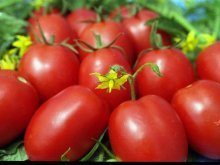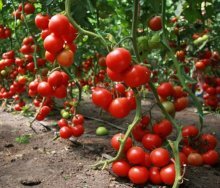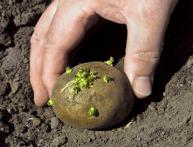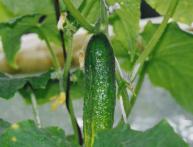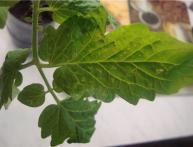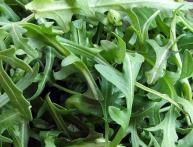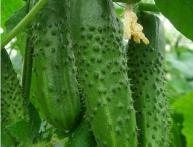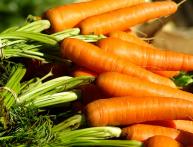How to choose the right high-yielding tomato varieties for greenhouses?
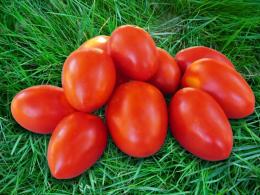
Just think, but 20 years ago gardeners were not tormented by the question of what variety of tomatoes to plant - they simply did not exist. Now the seed market is flooded with a variety of varieties for certain climatic conditions, including greenhouses. How not to drown in the stream of names and make the right choice?
Content:
Indeterminate tomatoes
All experts agree that it is indeterminate or tall varieties of tomatoes that are ideal for greenhouses. They form into one stem and its growth is not limited as long as there is space and favorable temperature conditions. Of course, they need more careful care, but at the same time the yield increases significantly. In particular, with proper care and watering, you can harvest up to 50 kg of tomatoes from a bush.
The main advantages of indeterminate varieties:
- The bush gives more harvest due to more color brushes
- They are less susceptible to fungal infections due to greater air intake
- Long fruiting phase, which allows you to enjoy tomatoes for a long time
- Bushes are much easier to form, since you only need to leave the stem without stepsons
The disadvantages include:
- Tomatoes are very picky about heat and care, so they may not grow in all areas.
- Unlimited growth, not only in height but also in width, not suitable for small children greenhouses and plots
- Due to precocity, a disadvantage may arise such as different sizes of fruits on one bush
Determinate varieties
In contrast to tall varieties, determinate varieties perform very well in different climatic conditions and require less care. But at the same time, they have limited growth and, therefore, limited yield. This species is also suitable for growing in greenhouses, especially if there is not much space.
The main advantages of determinate tomatoes include:
- Early fruits. They ripen earlier than identerminate ones, since the flower clusters are formed through fewer leaves.
- High level of early harvests in various climatic zones.
- More uniform harvest yield - several tassels are tied at once and almost at the same time.
Minuses determinant tomatoes:
- The overall yield is lower than that of tall ones, again due to the small growth of the bush.
- Diseases. These varieties are more prone to diseases. Loaded brushes reduce their resistance to viruses. That is why these varieties need to be treated more with chemicals.
- Increased fertilizer and mineral nutrition, again, due to the load on the brushes.
Main types of tall tomatoes
Of course, it is impossible to list all types of tomatoes, because every year breeders come up with more and more new hybrids. Let's try to list the main and most popular ones.
De Barao

One of the most famous varieties of indeterminate tomatoes. Its bushes reach up to 3 meters. At the same time, it can be cultivated both in a greenhouse and in open ground. From each square meter you can harvest a high yield - up to 10 kg per bush.
Like all tall trees, it has increased resistance to diseases.
De Barao is divided into several subspecies (pink, royal, gold, black, red, yellow) depending on the color of the fruit, but with the same characteristics - large yield and tall stature.
Octopus
Also one of the leaders tall tomatoes. It is ideal for growing in greenhouse conditions, and it looks quite interesting. A 3-meter tree with vines on which the treasured tomatoes grow. From such a tree you can get 1-1.5 tons of harvest. At the same time, the fruits have an excellent taste and can be stored for several weeks and even months if properly maintained.
Alhambra
The fruits are formed on the 110-115th day of planting. Its excellent yield is successfully combined with another advantage - the brushes do not refract. The taste of tomatoes is excellent. Alhambra in greenhouses produces fruit better from April to January, while forming huge, ten-meter lashes. The fruits are well stored for 3-4 weeks and can withstand long-term transportation.
Main types of determinate tomatoes
Semko-Sinbad F1
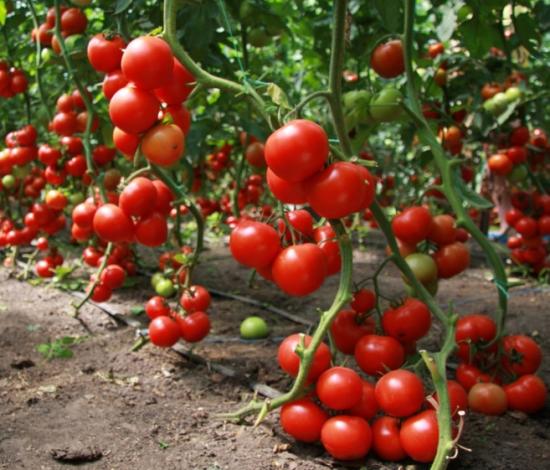
Classic to represent an early, fruiting variety. A very early variety, the first fruits can be harvested after 90 days. On its branch, 8 fruits are formed, weighing 100 g. The variety can be grown not only by seedlings, but also by planting seeds directly into the ground, while it has high resistance to infections.
Bourgeois
This is a mid-season variety, the fruits of which can be removed from the branches on the 100-110th day after planting. The average weight of such a fruit is 200 g. Due to its resistance to temperature changes, it grows well both in the southern regions and in the regions of the middle zone. With quality care, gardeners harvest up to 3 kg of fruit from one bush.
Hybrid Ivanhoe F1
Originally from Holland, tomatoes are loved by Russian amateur gardeners. Like all determinate varieties, Ivanhoe is unpretentious to the weather and easy to grow. The taste is much brighter than other greenhouse varieties of tomatoes, and early fruits can be obtained already at the beginning of summer.
This variety is ideal for lovers of natural growing - it does not require chemicals! In conclusion, I would like to note that experienced gardeners experiment with several varieties of tomatoes at once.
After all, they are all suitable for different climatic zones, where yield levels vary. When choosing a particular variety, you need to take into account the type greenhouses and weather conditions. Also, do not forget about new products that are productive and more resistant to diseases.
Video about productive tomatoes resistant to diseases:

